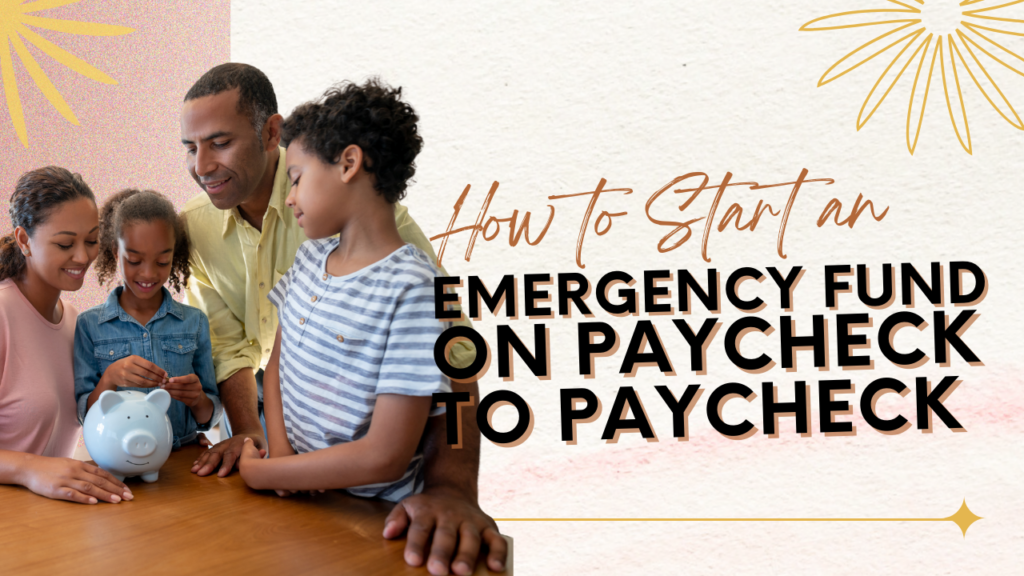Are you tired of treading water financially? Do you dream of a life where you and your family can enjoy the benefits of financial security and prosperity? What if I told you that it’s not just a dream, but a very achievable reality through investing in Real Estate?
A startling figure, yet factual one from the report by Forbes, claims that 90% of millionaires got their wealth from investing in real estate. Sound too good to be true? I assure you, it’s not. Welcome to the profitable world of Real Estate Investing! A fascinating world that doesn’t require a business degree or extensive financial knowledge but has the potential to turn your economic outlook around dramatically.

With the right guidance and a strategic approach, making your money work for you by investing in Real Estate is not only achievable, but it could also become a stable source of passive income! Imagine a life where you’re making money while you sleep, where your family’s future is secured, and where financial freedom isn’t a distant dream—it’s your reality.
This article is a powerful guide, primarily tailored for those novice investors who are overwhelmed by the array of terms, things to consider, laws to follow and more. But don’t feel left out if you’re an intermediate investor, this guide will be equally useful to help you refine your strategies, understand market trends better and avoid common pitfalls that hold many investors back.
In this blog, we will give you a comprehensive and concise blueprint on how to invest in real estate for passive income. The insights you’ll gain will not only help to alter your financial destiny but also will create a legacy of wealth for generations to come.
If you are up for the challenge and ready to embark on an exciting life-transforming journey, then stay tuned! Keep reading, and you’re about to get the best real estate investing education money can’t buy. It won’t be easy, but it will be worth it. Remember, every millionaire investor started just where you are right now. But the secret sauce is, they took the first step!
So, are you ready to shake up your financial reality? Are you prepared to turn your hard-earned money into an ever-growing money-making machine? Well, strap in and get ready. You’re about to become the investor you always wanted to be.
Benefits of Passive Real Estate Investing
Now, let’s talk perks, ladies! First off, passive income can be a game-changer for our family’s financial security. It’s like having a backup singer in your financial band, providing harmony and support. Plus, it’s a fantastic way to save for college funds, family vacations, or even that dream handbag you’ve been eyeing (we all have one!).
- Steady Income Stream: Think of it as your reliable BFF, always there to give you a financial hug when you need it.
- Diversification: Don’t put all your eggs in one basket, darling. Mixing up your investments can help keep your finances as balanced as your yoga instructor.
- Tax Advantages: Who doesn’t love a good tax break? It’s like the government’s way of giving you a high-five for being smart with your money.
- Appreciation Potential: Over time, your investment can grow in value. It’s like your child’s height chart, but instead of marking inches, you’re marking increases in your net worth!
Is Passive Real Estate Investing Right for You?
Now, I know what you’re thinking. “Is this the right move for me?” Well, let’s be real. If you’re a mom who’s juggling a million things and still wants to secure the bag (financially speaking), then yes! But remember, it’s not all sunshine and rainbows. You need to be comfortable with investing and understand that every investment has risks – like baking a soufflé for the first time (will it rise or will it flop?).
So, are you ready to step into the world of passive real estate investing? Strap on those heels (or comfy flats, no judgment here), and let’s embark on this exciting journey to financial freedom and security for our families. And who knows, maybe we’ll have a little fun along the way! 💃🏼💼

Understanding Real Estate Investment Types
Just like we have different outfits for different occasions, there are various types of real estate investments for different financial goals. Let’s explore these options, so you can pick what fits your style and needs the best. It’s like shopping for your financial wardrobe!
1. Rental Properties: The Classic Little Black Dress
Investing in rental properties is like owning that timeless little black dress. It’s a classic! You buy a property, rent it out, and voila – you have a steady income. Think of it as having a tenant who pays you to wear your dress. And the best part? The value of your dress (I mean, property) may increase over time. Just remember, being a landlord can sometimes feel like accessorizing that dress – it requires attention to detail and a bit of flair.
2. Short-Term Vacation Rentals: The Party Outfit
Short-term vacation rentals are the sparkly party outfits of real estate investing. They’re exciting, potentially more profitable, but also require more effort (like actually going to the party). Platforms like Airbnb have made this option more accessible. You’re basically hosting a global party and getting paid for it! But remember, the income can be as unpredictable as a dance floor – some nights are a hit, and others, not so much.
3. Running a Passive Airbnb Business: The Rent-a-Dress Service
Imagine having a fabulous dress that everyone wants to borrow. That’s what running a passive Airbnb business is like. You provide a great place to stay, and a property manager handles the nitty-gritty. It’s less hands-on, allowing you to focus on your family, career, or that new hobby you’ve been wanting to try. It’s passive income with a touch of glamour!
4. Real Estate Investment Trusts (REITs): The Investment Wardrobe
REITs are like having a diverse wardrobe of real estate investments in one neat package. These trusts own, operate, or finance income-producing real estate. You can invest in them much like stocks, making them an accessible way to get into real estate without buying physical property. It’s like owning a piece of several different outfits, from office buildings to shopping malls. And the best part? You don’t have to worry about the laundry!
5. Real Estate Crowdfunding: The Trendy New Accessory
Real estate crowdfunding is the trendy new accessory on the block. Platforms allow you to pool your money with other investors to fund real estate projects. It’s like going in on a statement piece with your friends – less risk and less capital required, but you still get to enjoy the style (and returns!).
6. Remote Ownership: The Online Shopping of Real Estate
Finally, there’s remote ownership, where you invest in property in a different location. It’s like online shopping for real estate – you can invest anywhere, regardless of where you live. This option opens up a world of opportunities, but like online shopping, it requires thorough research to ensure you get what you expect.

How About Real Estate Investment Trusts (REITs)
Imagine REITs as your all-in-one real estate investment boutique. These companies own, operate, or finance income-generating real estate across various sectors – from swanky office spaces to cozy apartments, and even those mega shopping centers where we may or may not spend too much time (and money). The best part? They’re required to distribute at least 90% of their taxable income to investors as dividends. It’s like getting a regular paycheck for being fabulous!
Publicly Traded REITs
Publicly traded REITs are the superstars of the stock exchange. You can buy and sell them just like stocks, making them as easy to trade as last season’s handbag. They offer liquidity, transparency, and a performance track record, much like checking the reviews before splurging on that designer dress. But remember, with great accessibility comes exposure to market volatility – they can be as unpredictable as a toddler with a paintbrush.
Non-Traded REITs
Non-traded REITs are the exclusive boutiques of the REIT world. They’re not listed on stock exchanges, which means they’re less susceptible to market swings. However, this also makes them less liquid – think of it as owning a piece of haute couture that you can’t easily resell. They often have higher upfront fees, but can offer a more stable income stream, like a trusty old handbag that never lets you down.
REIT Mutual Funds
REIT mutual funds are like having a personal shopper for your real estate investments. These funds pool money from various investors to buy a portfolio of REITs. It’s a way to diversify within the real estate sector without having to pick individual REITs. Plus, you get professional management – like having a stylist to ensure your financial outfit always looks on point.
REIT Exchange-Traded Funds (ETFs)
Lastly, REIT ETFs are the ready-to-wear collection of the investment fashion world. These funds track a REIT index and are traded on major stock exchanges. They offer diversification, low costs, and ease of trading – like finding that perfect dress off the rack. It’s a straightforward way to add a touch of real estate glamour to your portfolio without the hassle of picking individual stocks.
Other Passive Real Estate Investment Options
Alright, financial fashionistas, let’s explore the boutique lanes of passive real estate investing beyond the REIT runway. There are more chic options to accessorize your investment portfolio!
Real Estate Funds
Think of Real Estate Funds as your curated collection of real estate pieces. These funds invest directly in properties or mortgages and are managed by professionals who know the ins and outs of the real estate market. It’s like having a personal stylist who picks out the best real estate pieces for you. The advantage? Diversification and professional management. The catch? Higher fees and less liquidity. It’s the haute couture of real estate investing – exclusive, professionally tailored, but a bit more of a commitment.
Real Estate Crowdfunding
Now, let’s talk about the latest trend in town – Real Estate Crowdfunding. This is like crowdfunding for that indie movie everyone’s talking about, but instead, you’re pooling funds with other investors to back real estate projects.
It’s a way to get into more significant, potentially lucrative deals without writing a blockbuster-sized check. The thrill? You can be part of big projects, like developing a swanky new apartment complex. The risk? It’s like backing a new director – exciting, but with an element of the unknown.
Remote Ownership
Last but not least, let’s jet-set into the world of Remote Ownership. This is for those who want to invest in real estate markets outside their local area. Think of it as online shopping for properties – you can invest anywhere from the comfort of your home. It’s perfect for diversifying your portfolio geographically. But remember, it’s like buying a dress without trying it on – research and due diligence are key to ensure it fits your investment style.

How to Invest in Real Estate for Passive Income
Alright, go-getters, let’s roll up our sleeves (or adjust our tiaras) and dive into the practical world of earning passive income from real estate. It’s like finding the perfect recipe for a financial feast!
Investing in Rental Properties
First up, the bread and butter of real estate: Rental Properties. Think of this as owning a boutique hotel, but instead, it’s an apartment, house, or even a duplex. The key ingredients? Location, location, location! You want a spot that’s as desirable as a table at a trendy brunch place. Look for areas with strong rental demand, like near universities, business hubs, or tourist attractions.
Now, the secret sauce: Buy at the right price. It’s like snagging a designer dress on sale – you want value for your money. Ensure the rent you can charge will cover your mortgage, taxes, insurance, and maintenance, with a nice dollop of profit on top.
Work with a Property Manager
But wait, there’s more! If the thought of dealing with midnight plumbing disasters or playing rent-collector makes you cringe, consider a Property Manager. They’re like your personal concierge, handling the day-to-day management of your property. Yes, they cost a bit (usually a percentage of the rental income), but they can save you time, headaches, and manicures. It’s passive income at its finest – earning money while someone else does the heavy lifting.
Where to Buy: Identifying Profitable Locations
The grand finale: Picking the perfect spot. This is like choosing the right party to attend. You want a location that’s not just good today but will be fabulous in the future. Look for areas with growing job markets, planned infrastructure developments (like new schools or transit), and stable or increasing demand for housing.
Consider the property’s potential for appreciation. Some areas are like classic wardrobe staples – they never go out of style and steadily increase in value. Others are like fast fashion – they might have a quick spike in popularity but don’t have long-term staying power.
And don’t forget to diversify! Just like you wouldn’t fill your closet with only cocktail dresses, don’t put all your investment eggs in one regional basket. Spread out your investments to mitigate risks associated with any single market.

Risks and Downsides of Passive Real Estate Investing
First, let’s talk about the not-so-glamorous part: the risks. Just like trying a new daring recipe for a dinner party, passive real estate investing comes with its own set of challenges.
- Market Fluctuations: Real estate markets can be as unpredictable as a toddler’s mood – one minute it’s all sunshine, the next it’s a storm. Economic factors, interest rates, and even local developments can affect your investment.
- Liquidity Issues: Unlike selling stocks, offloading a property or getting out of a real estate fund isn’t a click-of-a-button affair. It’s more like trying to resell a designer gown – it takes time and the right buyer.
- Management Hassles: Even with a property manager, there can be issues. Think of it as having a babysitter; they handle the day-to-day stuff, but the big decisions and responsibilities are still yours.
Passive Income Investor Mistakes to Avoid
Now, let’s ensure we don’t step on any financial legos in the dark. Common mistakes include:
- Not Doing Enough Research: This is like buying a car without a test drive. Understand the market, the property, and the potential returns before diving in.
- Underestimating Expenses: Always expect the unexpected. Maintenance costs, vacancies, and other expenses can eat into your profits like little munchkins with a cookie jar.
- Failing to Plan for Taxes: Taxes in real estate can be as complicated as a soufflé recipe. Know the tax implications of your investments to avoid unpleasant surprises.
Tax Benefits: Direct Ownership vs. Passive Investing
Direct ownership often comes with juicy tax deductions like mortgage interest and property depreciation. Passive investing, especially through REITs, doesn’t always offer these benefits since you’re not the direct owner. It’s like the difference between making a gourmet meal at home (direct ownership) and ordering from a fancy restaurant (passive investing) – both are great, but the experiences and benefits differ.
Real Estate vs. Stocks
Comparing real estate and stocks is like comparing apples and oranges – both nutritious but in different ways.
- Real Estate: Tangible, can provide steady income and potential tax benefits, but requires more capital and is less liquid.
- Stocks: Highly liquid, easy to diversify, and no property maintenance headaches. However, they can be more volatile and don’t offer the same tax advantages as direct real estate investments.
Wrapping Up
And there we have it, my fellow trailblazing moms and savvy investors! We’ve journeyed through the vibrant world of passive real estate investing, exploring its nooks and crannies, much like navigating a busy day filled with work, family, and a dash of personal time.
From understanding the different types of real estate investments, like the versatile pieces in our wardrobe, to navigating the financial considerations and comparisons, akin to balancing our family budgets, we’ve covered the essentials to empower you on this exciting journey.
Remember, investing in real estate for passive income is not just about building wealth; it’s about creating a legacy and securing a comfortable future for our families. It’s the financial equivalent of preparing a nutritious meal for our kids – it requires planning, effort, and a whole lot of love.




